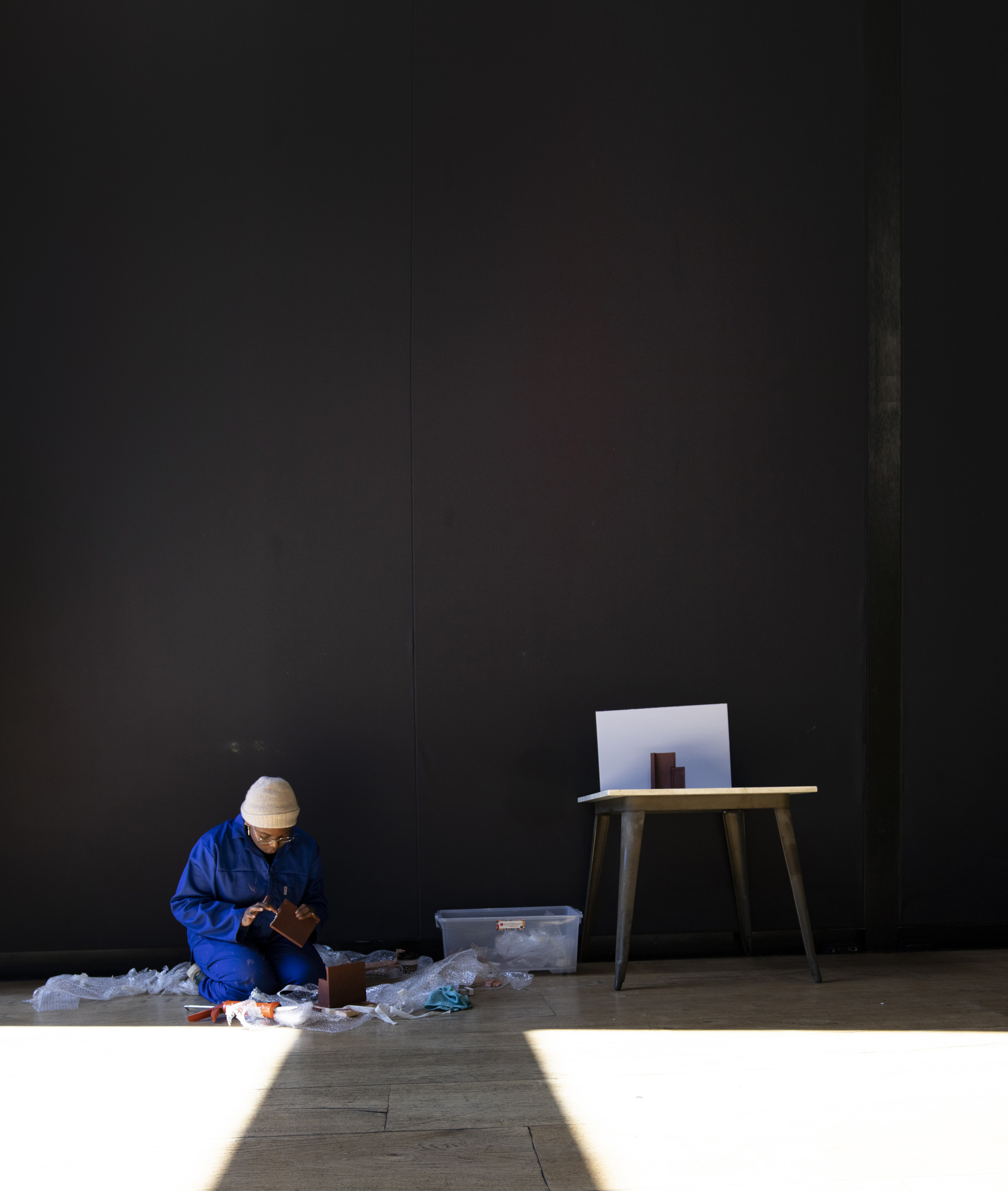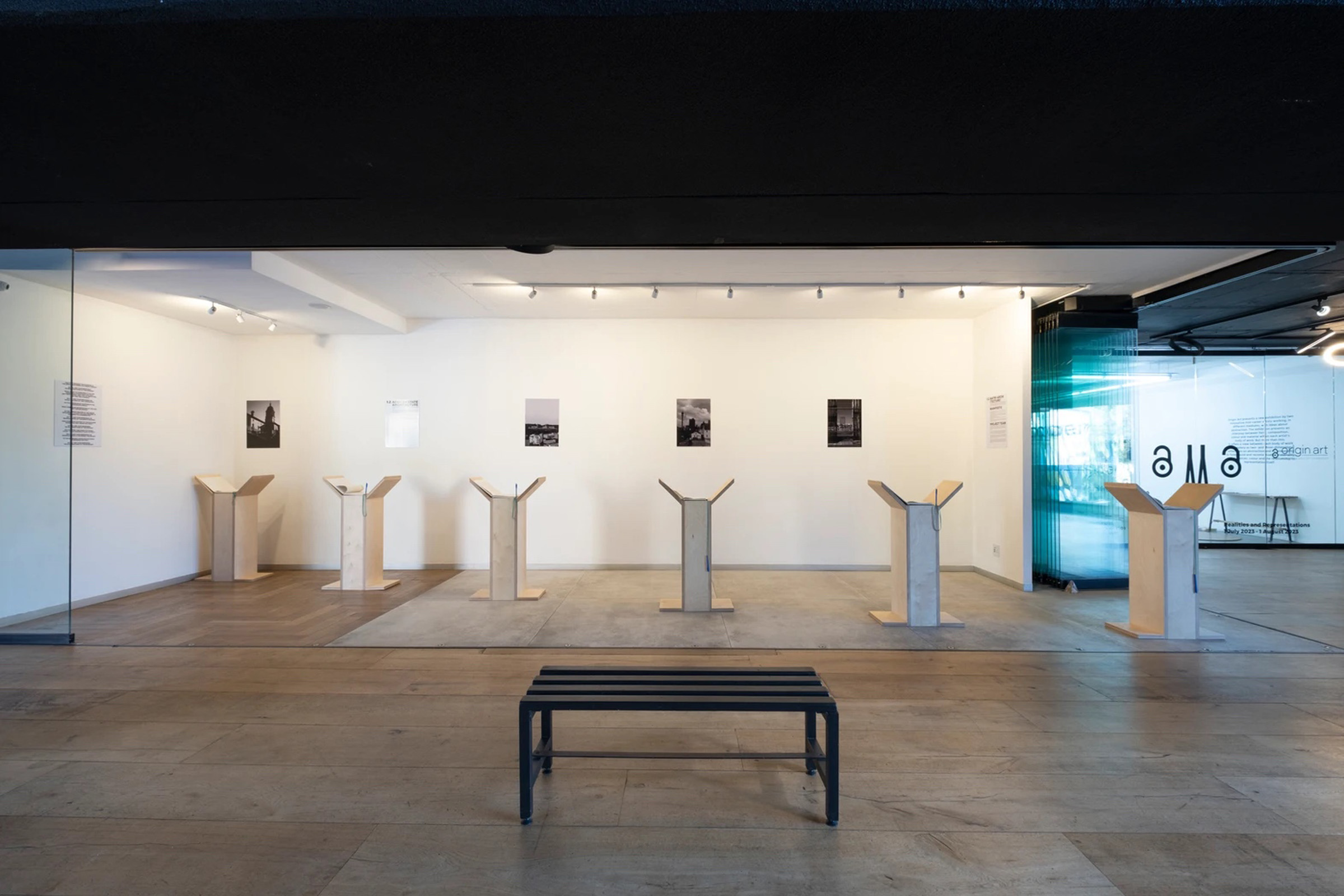SOAS University of London has unveiled Building Africa, an exhibition exploring the relationship between architecture and politics, focusing on the architecture of state institutions in Ghana, South Africa, and Ethiopia. Its curators, African Studies professor Julia Gallagher and postdoctoral researcher Kuukuwa Manful commissioned design teams from these countries to collect and reinterpret local impressions of iconic buildings at these sites. It is these works that have been brought together and recreated for Building Africa.
Source:Beth Boswell-Knight
Building Africa installation
Each display responds to research carried out by Gallagher and Manful as part of African State Architecture, a five-year project within the university, exploring the architectural expressions of statehood across the continent. These three countries are only some of the areas covered by the project and are intended to provide a cross-section of political power and identity across the continent.
Ethiopia’s offering is a large umbrella-like installation, the Tilla, named after an Amharic word evoking shade, shelter, and protection
For the South Africa section, architecture collective Matri-Archi(tecture) examines two important South African state buildings: The Union Buildings, former headquarters of the colonial government and now offices of the nation’s president; and the Constitutional Court Building, constructed on the site of the infamous Old Fort prison, which housed high-profile political prisoners including Mahatma Gandhi and Nelson Mandela. Photographs and clay models of these buildings’ fragments placed in lecterns were originally exhibited in Johannesburg. The written records of visitors’ comments provide insights into the perceptions of these buildings in the collective consciousness.

Source:Julia Gallagher
Aude Tollo from Matri-Archi(tecture) Collective setting up the Johannesburg exhibition
The Ghana team presents Ananse Playhouse, a structure with a web-like exterior inspired by Ananse, a folkloric character of the Akan people of central and southern Ghana. The playhouse is decorated with photographs, models and artefacts from prominent Ghanaian buildings including Osu Castle, Jubilee House and Kpando Secondary School, forming a complex web of state and institutional power.
Ethiopia’s offering is a large khaki and orange umbrella-like installation called the Tilla, named after an Amharic word evoking shade, shelter and protection. Designed to protect the visitors from sun and rain (it was originally exhibited outdoors in Addis Ababa), the structure is mostly empty, and is described as using ‘augmented reality and animation’ to tell the chosen buildings’ stories. This is to say that users must scan a series of QR codes to access information on key buildings from the African State Architecture project, including the Zimbabwe parliament building, the African Union Headquarters and the Basilica of Our Lady of Peace in Ivory Coast.

Source:Beth Boswell-Knight
Building Africa installation
The exhibition film, produced by Gallagher, presents findings from the research project that inspired the exhibition through a compilation of interviews, news clips and archive footage and photography. The film explores how key political and institutional buildings in South Africa, Ghana, Ethiopia, Zimbabwe and the Democratic Republic of Congo (DRC) shape political power and cultural identity. The narration and accounts presented reveal much about the power, persistence of this influence – as well as its mutability.
Kwame Nkrumah’s location of the seat of Ghana’s first post-independence government at the grand Osu Castle – a fort with a long history of colonial rule – can be seen as an attempt to capitalise on its previous associations with authority and control. Conversely, the construction of the Constitutional Court of South Africa on the former premises of the Old Fort prison seeks a symbolic subversion of the site’s oppressive past through the establishment of a court dedicated to protecting the equal and constitutional rights of all citizens.
The web-like Ananse Playhouse is decorated with photographs, models and artefacts from prominent Ghanaian buildings
Beyond strictly political buildings, stadiums and airports, too, participate in this power play. The DRC’s former president Mobutu Sese Seko used the ‘20th of May Stadium’ in Kinshasa to convene large crowds for his rapturous rallies and speeches, as well as placate the masses through sports entertainment – 1974’s ‘Rumble in the Jungle’ boxing match between George Foreman and Muhammad Ali being a significant example. Meanwhile, the Addis Ababa Bole Airport, despite acting as a major hub of intra and intercontinental travel, is seen by many as a self-aggrandising projection of Ethiopia’s power and superiority in Africa.

Source:Earl Abrahams
South Africa’s original exhibition in Johannesburg
Africa is generally seen as a hotbed of political oppression, corruption and instability, and is often dismissed on that basis. By mapping and studying its public buildings, Building Africa and the wider African State Architecture project go some way towards revealing the specificities, complexities, and ambiguities of the mechanisms of political power as articulated in the architecture of the continent.
Building Africa is at the Brunei Gallery, SOAS, London WC1, until 16 March
Source link : https://www.architectsjournal.co.uk/practice/culture/how-africas-politics-influenced-its-architecture
Author :
Publish date : 2024-02-27 08:00:00
Copyright for syndicated content belongs to the linked Source.





